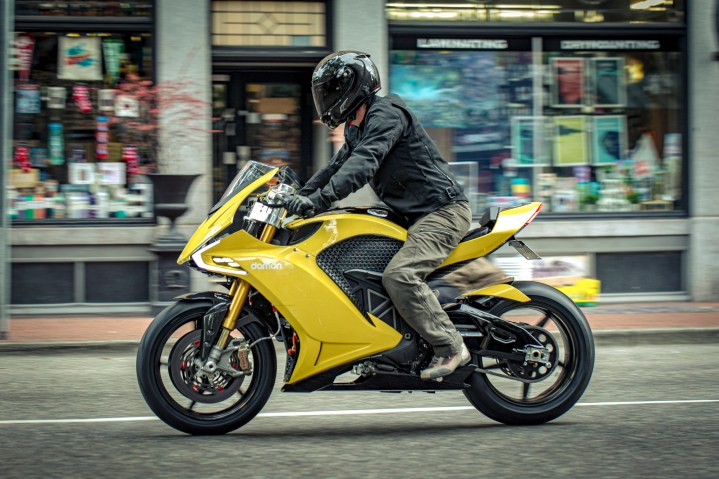
Geneva has exotics. Detroit has muscle. Frankfurt has engineering. And Vegas, well, Vegas has the future.
Despite its former name (the Consumer Electronics Show), CES is every bit a car show. As screens have replaced gauges, electric motors have supplanted engines, and computers take over for drivers, CES has become the world’s go-to showcase for cutting-edge automotive technology.
And there will be no shortage of gawk-worthy gadgetry at CES 2020. From the next breed of driverless cars to Cybertruck wannabes, here’s a glimpse at what we expect this year.
EV trucks
Imitation is the sincerest form of flattery, and for dinosaur automakers confronting Tesla’s otherworldly Cybertruck, it may also be the only way to keep up. Ford has been teasing an electric truck for nearly a year, and CES would seem like the perfect venue to peel back the curtain (and maybe give Tesla a tug-of-war rematch?). GM mumbled about an electric truck in the Cybertruck’s shadow, then decided to run home from CES 2020 with its tail between its tires, so count them out. Fiat Chrysler has also hinted about adding electric vehicle (EV) power to RAM trucks and Jeeps this year. Toyota is infamously skittish about EVs, but after showing off a plug-in hybrid RAV4 at the recent LA Auto Show, a Tacoma or Tundra with the same tech would be a no-brainer to show 4×4 fans that Tesla’s Elon Musk isn’t the only one taking EVs off-road.
3D-printed vehicles

It’s no secret that 3D printing isn’t just for flimsy prototypes behind “do not touch” signs anymore. In early December, a Chinese manufacturer launched a Kickstarter that promised backers a 3D-printed EV for about $6,700. Vaporware? Maybe. But Volkswagen is currently printing hundreds of thousands of 3D-printed parts for its upcoming ID.3, and Ford’s Mustang GT500 is currently tearing around on roads with 3D-printed brake-line brackets. Advances in the size of 3D printers and the materials they can work with have made them ready to crank out road-worthy parts like gear shifters and mirror mounts. Prepare to see even more at CES 2020.
Electric motorcycles
Last year, Harley-Davidson made a splash by finally launching its long-awaited LiveWire electric motorcycle at CES. It’s a shockingly fun bike, but things are about to get a lot weirder. This year, Canadian startup Damon will unleash a shape-shifting motorcycle prototype. That’s right, shape-shifting. In addition to running on electricity, it will morph from a hunched-over sportbike riding position to an upright cruising position on the fly. We also expect hands-on time with Segway’s new dirt ebike, and the usual smattering of smart motorcycle helmets that never seem to become real.
Steps toward self-driving

Snarky engineers love to joke that the first 90 percent of a project takes 10 percent of the time, and the final 10 percent takes 90 percent of the time. They’re right. And when it comes to autonomous cars, the good news is, we’re 90 percent of the way there. The bad news is … uh, it’s going to be a while.
Expect the biggest players in the game to roll out small fixes to the many barriers that stand between us and full autonomy. Frontrunner Aptiv will announce a new way of sharing computational power between in-car systems. Aeva, a company in the crowded lidar space, will announce a new chip for autonomous cars to sense the world around them. A bajillion companies will tell you this is the year of self-driving cars. They’re all a little optimistic.
In-car entertainment gone wild
Your car may not drive itself yet, but that hasn’t stopped companies from fantasizing about how you’ll use all the extra time when they can. From TVs on the ceiling to Audi’s in-car VR, we’ve seen some doozies, and fully expect a whole new batch of out-there ideas this year. Workout equipment built into cars? Meditation mode? Fully stocked backseat bar? Rest assured that by the time your car can drive itself, you’ll never be bored.
Better batteries

From lidar to next-gen LED headlights, CES is a bazaar for the tech that makes a smart cars smart. We’ve seen major strides in all of them at past shows, except the one that needs progress most: Batteries. For the most part, everyone (even Tesla) uses some iteration of the same lithium-ion technology that has been around for decades. It evolves a bit every year, but we’re still waiting for game-changers like supercapacitors to debut in earnest. Oh wait, didn’t Lamborghini just patent one with the Massachusetts Institute of Technology for use in its upcoming Sián supercar? Yes, it did. And we’d love to see it at CES 2020, along with some other supercapacitor competitors.
The next Tesla?
Consider this one a long shot, but the transition to EVs has traditional automakers on their heels, and CES is home turf for all of Tesla’s biggest challengers. Newcomers like Rivian, Byton and (the reborn) Fisker have all used the show as a stage to strut their stuff in the past, and we wouldn’t be shocked to see one of them step out with a major announcement this year. In fact, we just got word that Fisker will launch the Ocean electric SUV. Could we see a Rivian sedan? A Byton ready for roads? A Faraday Future anyone believes is real? It’ll all become clear at CES 2020.
Editors' Recommendations
- Forget waiting! Here’s all the CES 2022 tech you can buy right now
- CES 2020 Day 4 Recap: Top tech, a tattoo printer, & the products we loved
- 5G at CES 2020: Here’s what you can expect to see at this year’s show
- Why General Motors won’t be showing its next electric car at CES


